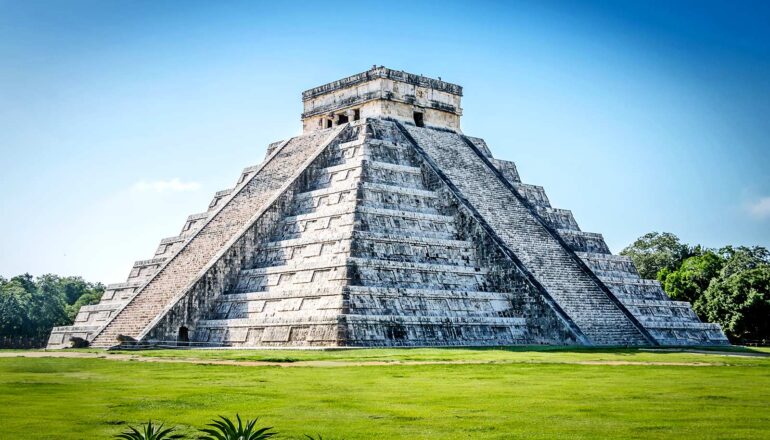What led to the rise and fall of Classic Maya cities?
- The rise and fall of Classic Maya cities was influenced by multiple factors, including climate downturns, intergroup conflict, and strong economies of scale.
- The study, led by University of California, Santa Barbara archaeologist Douglas Kennett, used population ecology theory to quantify the drivers of urbanism in the Classic Maya Lowlands.
- The researchers found that deurbanization occurred when the benefits of urban living no longer outweighed the costs, as environments were degraded near cities and climate amelioration improved rural areas’ livability.
- Contrary to previous theories, the study suggests that the abandonment of Classic Maya cities occurred under improving climatic conditions, rather than an extended period of drought.
- The findings offer critical insights for understanding and managing contemporary and future urban evolution by establishing timeless, universal principles for how populations aggregate and disperse.

New research digs into why Classic Maya cities rose and fell.
Why move to a city? And why leave? Urban centers today see populations ebb and flow for a multitude of reasons—the economy, crowds, lifestyle considerations, air quality, the odd pandemic perhaps.
Turns out it’s sort of always been that way.
The earliest cities worldwide were born of country folk. Farmers, that is, agriculturists. They were agrarian populations, reliant on land-extensive economies, which incentivized them to live dispersed across the landscape in small settlements, to minimize the time and travel costs between their residences and farm plots.
Then as now, though, city living was more expensive in all the ways: greater susceptibility to crowd diseases, greater competition for land and resources, and rising levels of systemic inequality. And still farmers chose to bear these seemingly paradoxical costs.
What gives?
That question has been the source of a long-standing debate, according to University of California, Santa Barbara archaeologist Douglas Kennett, who has conducted extensive research into urbanization in Classic Maya cities.
The answer, he says, is complicated, suggesting there are multiple, often overlapping factors for both the rise and the fall of these ancient urban centers.
Kennett and collaborators from several institutions explore and clarify that complexity in a new study in the Proceedings of the National Academy of Sciences. The research leverages population ecology theory and quantifies the drivers of urbanism across the Classic Maya Lowlands.
“We determined that the rise and expansion of Classic Maya cities resulted from the interaction of climate downturns, intergroup conflict, and the presence of strong economies of scale realized through capital investments in agricultural infrastructure,” Kennett says.
“These factors promoted the coevolution of urbanism, systemic inequality, and patron-client relationships in cities.”
Using that same framework, he adds, the researchers also determined that deurbanization set in “when the benefits of urban living no longer outweighed the costs, as environments were degraded near cities and climate amelioration improved the livability of rural areas where people would have more freedom and autonomy.”
Indeed, the team’s initial interest was centered on the role of climate change—specifically drought—in the decline of Classic Maya cities. Since 2012 the group has been amassing archaeological data on changing population sizes, conflict, and investments in agricultural infrastructure. Then they came into some newly available high-resolution climatic data.
“We also capitalized on major developments in computational modeling that allowed us to look at the relationships between these datasets in ways not previously possible,” Kennett says.
Their results integrate previously contentious and separate theories of urbanization—such as environmental stress, warfare, and economic factors—into a single, dynamic model based on concepts from population ecology. The study also resolves the paradox of why agrarian populations—whose land-extensive economy incentivizes dispersal—would aggregate despite the high costs of urbanization.
“The biggest surprise for me was that the abandonment of cities occurred under improving climatic conditions,” Kennett notes.
“We have long thought that the decline of Classic Maya cities partially resulted from an extended period of drought. It turns out to be a much more complicated and interesting story.”
All told, the new work offers critical insights for understanding and managing contemporary and future urban evolution by establishing timeless, universal principles for how populations aggregate and disperse.
Source: UC Santa Barbara
The post What led to the rise and fall of Classic Maya cities? appeared first on Futurity.
